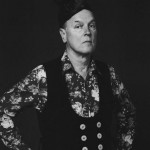Today’s Washington Square Park contains musicians playing everything from jazz to bluegrass, performers showcasing everything from breakdancing to hula hooping, and students studying, rushing to class or filming their latest documentary. The park has long maintained an eclectic arts and social scene, but it wasn’t always possible to run about through the Square as freely as we do today.
Until 1959, the park served as a turn-around for city buses, where they would drive through the arch and circle around to head back north on 5th Avenue. In the early 1950s, Robert Moses put forth plans to extend 5th Avenue south, through Washington Square, where it would continue into today’s South Village, part of a large-scale urban renewal project titled the Washington Square Southeast Title I project. The proposal was for a four-lane, partially sunken roadway that would have removed the fountain. A young Greenwich Village mother, Shirley Hayes, discovered these plans and she, along with early neighborhood activists and preservationists such as Jane Jacobs, vehemently opposed the plan and fought against it.
Shirley Hayes was appointed to the Manhattan Borough President’s Greenwich Village Community Planning Board to help find an alternate plan for the park. She also founded the Washington Square Park Committee, which was comprised of 36 community groups. This led to “Save the Square!” the official name of the battle against automobiles in the park. Alternate plans for traffic extensions were propsed, but Hayes rejected them all. She gave her own proposal that converted the existing roadway into parkland and eliminated traffic completely. This plan received the support of Eleanor Roosevelt, who lived on Washington Square West at the time, and then-congressman John Lindsay.
Around the same time, an architect and city planner named Stanley Tankel called together a team of planners, architects, real estate experts, and builders to assemble the Greenwich Village Study, a report that would issue recommendations on how to make the Village more livable. It would eventually rebut Moses’ proposal as well. The study’s research looked at traffic, housing in the Village, parks development, and school reform. Greenwich Village Society for Historic Preservation (GVSHP) conducted on oral history interview (available at gvshp.org/tankel) with Stanley’s widow, Claire Tankel, in which she said of the study, “it was this idea that a loose community of professionals could help their own community and bring in their expertise and their help.” This type of communal effort did not go to waste.
In 1959, after seven years of neighborhood activism and opposition to the plan and a one year trial period of traffic closure, the Board of Estimate took the suggestions of the Washington Square Park Committee and the countless other neighborhood entities and persons involved in the fight, and closed the park to all vehicular traffic. The Tankels rode in the car that was ceremoniously the last to drive through the park.
Following this triumph, it was possible for more park-like features to be introduced into the square such as game tables, playgrounds, and sand pits. Today, the artistic and fun-loving nature of Washington Square that Village preservation pioneers like Jane Jacobs, Stanley Tankel, and Shirley Hayes sought to conserve is still very much alive and well.



